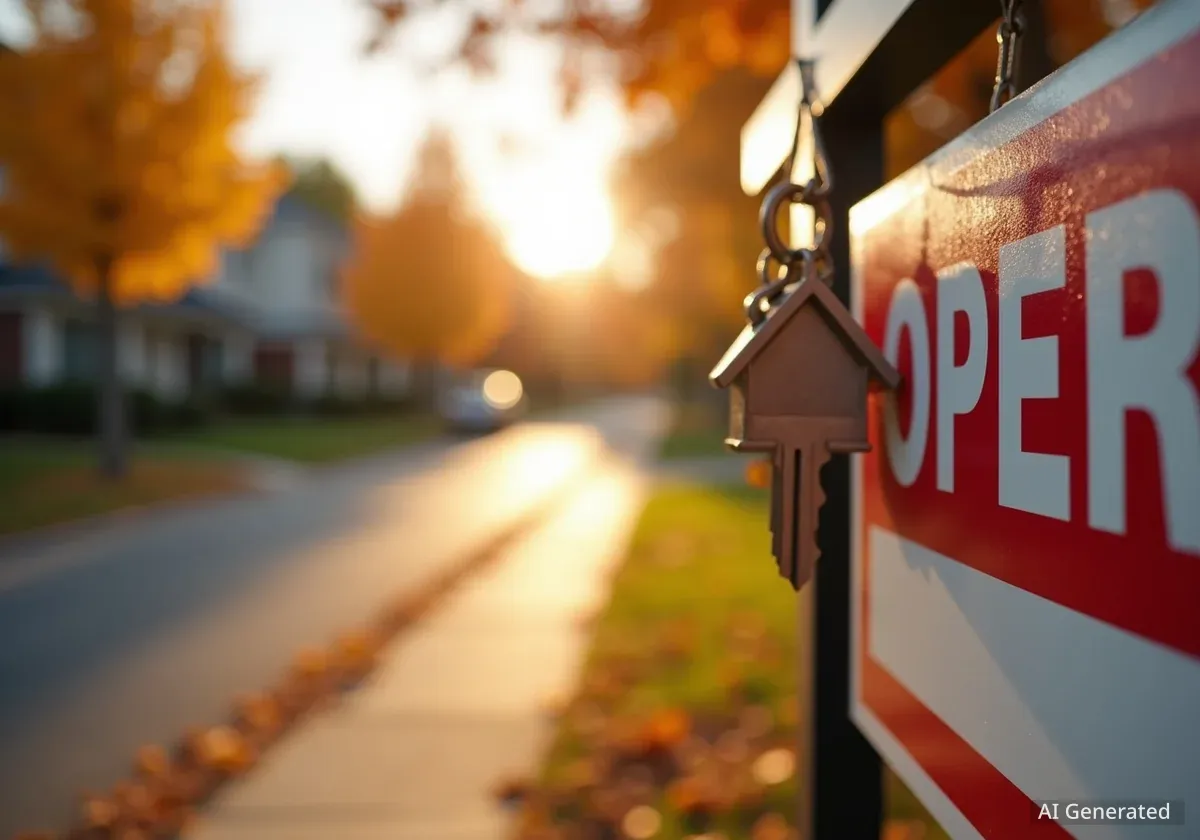A new analysis from realtor.com has identified a specific period this fall that may present a significant opportunity for homebuyers. The report suggests the week of October 12-18 offers a rare combination of more available homes, reduced prices, and less competition from other buyers.
This confluence of factors creates what the study calls a "sweet spot" for those looking to purchase a home, potentially providing greater negotiating power and substantial savings compared to the peak summer season.
Key Takeaways
- The week of October 12-18 is highlighted as the best time to buy a home nationally, according to a realtor.com study.
- Buyers may benefit from more listings, lower prices, and reduced competition during this period.
- Potential savings could average over $15,000 compared to peak summer prices on a median-priced home.
- While a national trend exists, the optimal buying window varies significantly across different metropolitan areas.
A Shifting Market Dynamic
After years of intense competition and rapidly rising prices, the housing market is showing signs of rebalancing. While not fully a "buyer's market," conditions are more favorable for purchasers than they have been in nearly a decade.
Danielle Hale, chief economist for realtor.com, noted the changing environment. "I expect this market momentum shift to magnify typical seasonal trends that favor home buyers in the fall," she stated. This shift provides a window of opportunity for buyers who may have been sidelined by the previous market's intensity.
"In a year that’s been the most buyer-friendly in nearly a decade, it’s the best window of opportunity for home buyers all year," Hale added, emphasizing the significance of the autumn season.
The study indicates that slowing home sales over the summer, combined with the potential for easing mortgage rates, could lead to a rebound in buyer demand as conditions improve.
Key Advantages for Autumn Homebuyers
The realtor.com analysis breaks down several factors that contribute to making mid-October an advantageous time for house hunting. These elements combine to create a less frenzied and more affordable purchasing environment.
Increased Housing Inventory
The number of homes available for sale has reached its highest point since the pandemic began. Active listings surpassed the one million mark in late spring, a milestone unseen for several years. During the identified week of October 12-18, buyers could see as many as 33% more active listings than were available at the beginning of the year.
"This increase is giving buyers something they haven’t had in years: breathing room," Hale explained. More choices reduce the pressure on buyers to make hasty decisions or waive important contingencies like home inspections.
Inventory by the Numbers
The number of active listings for sale in the U.S. climbed above 1 million in late spring 2025, providing buyers with the most choices they have seen in years.
Lower Prices and Potential Savings
Home prices typically reach their peak during the summer months. According to the data, listing prices during the week of October 12-18 are, on average, about 3.4% lower than the seasonal high. For a median-priced home of $439,450, this could translate into savings of more than $15,000.
This price dip is a predictable seasonal trend, but it is amplified this year by the broader market cooling, giving buyers a chance to secure a property for less than they would have just a few months prior.
Greater Chance of Price Reductions
In addition to lower initial listing prices, the likelihood of sellers reducing their asking price increases in the fall. The study found that during the optimal week in October, approximately 5.5% of homes on the market typically have a price reduction. Economists suggest that current market trends could lead to even more discounted listings this autumn.
Reduced Buyer Competition
With many families settling in for the new school year, buyer demand naturally cools in the fall. The analysis projects that competition among buyers in October could be about 31% lower than during the peak season. This decrease eases the pressure to engage in bidding wars and allows for more thorough consideration of properties.
Understanding Market Pace
Even with less competition, desirable homes can still sell quickly. According to the REALTOR® Confidence Index, the average listing in July still received 2.1 offers, and 21% of homes sold for more than their asking price, indicating a still-active market for well-priced properties.
A Slower Pace of Sales
Homes are also staying on the market longer, giving buyers more time to make informed decisions. This summer, the median time on the market in the U.S. surpassed pre-pandemic levels. In October, homes typically spend about two additional weeks on the market compared to the fastest-selling periods of the year.
Timing Varies by Local Market
While the report identifies a national sweet spot in mid-October, it stresses that the "best time to buy" is highly dependent on local market dynamics. Affordability and regional economic factors cause the optimal window to shift from one metro area to another.
The analysis provides a breakdown of when different cities are expected to experience their prime buying conditions:
- Early Season (Early-to-Mid September): New York and Philadelphia.
- Pre-National Peak (Sept. 28 - Oct. 4): Chicago, Atlanta, and Dallas.
- National Trend (Oct. 12 - 18): Houston, Los Angeles, and Washington, D.C.
- Late Season (Nov. 2 - 8): Phoenix, Louisville, and Charlotte.
- Winter Season (Nov. 30 - Dec. 6): Several Florida markets, including Ft. Lauderdale and Tampa.
Prospective buyers are encouraged to research their specific local market trends to identify the most opportune time to make a purchase. These regional differences highlight the importance of localized data in making real estate decisions.





